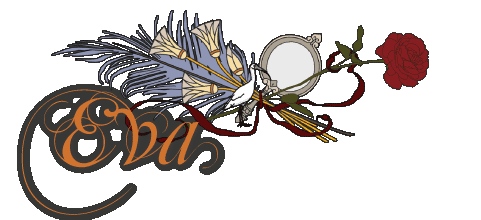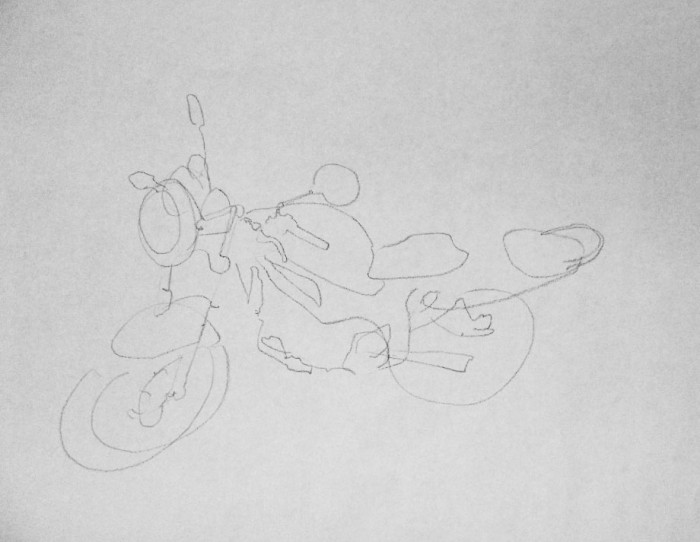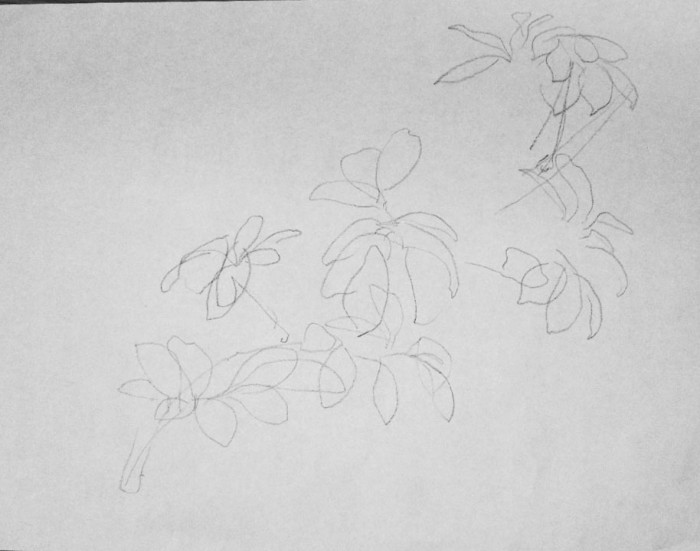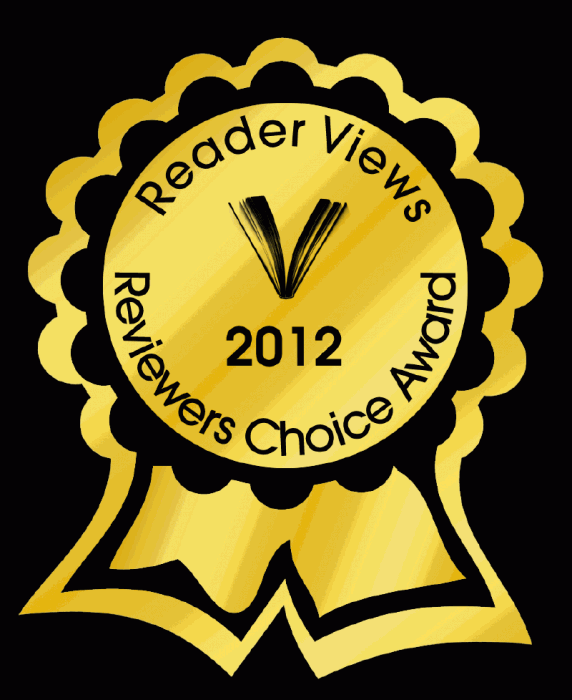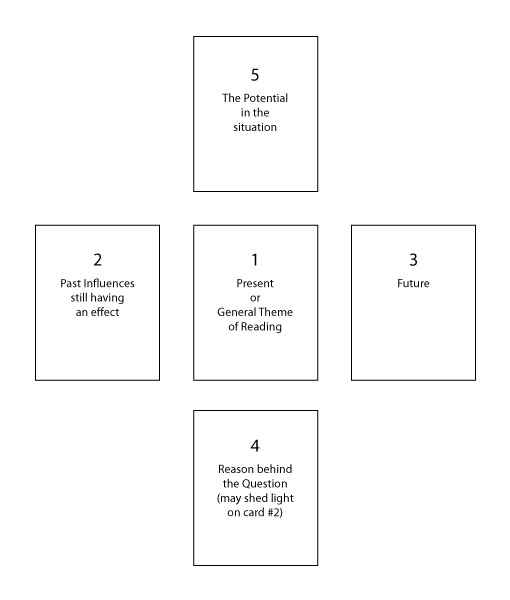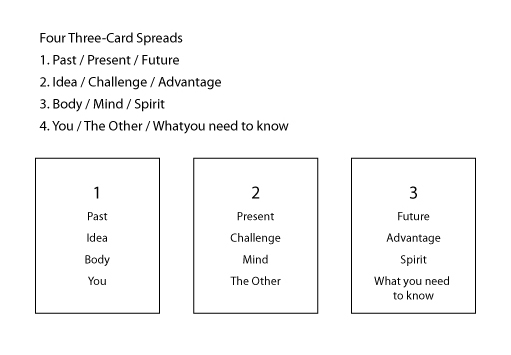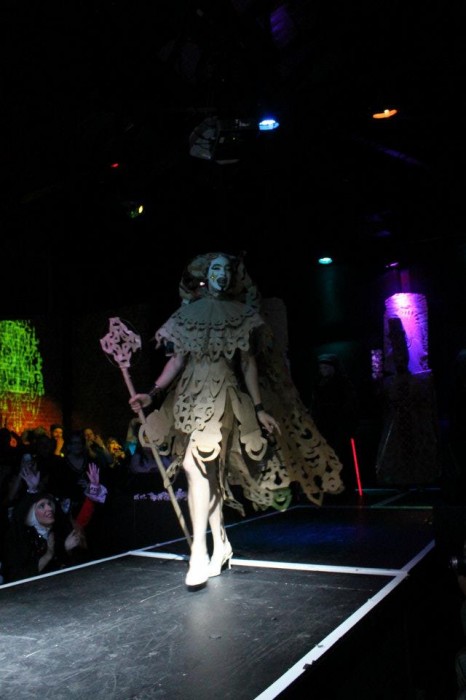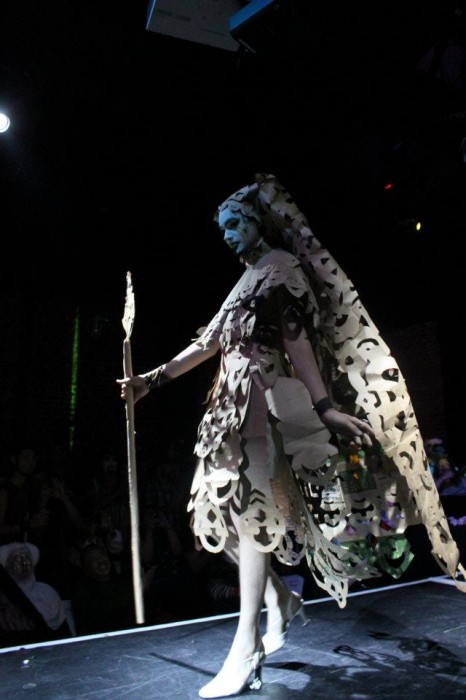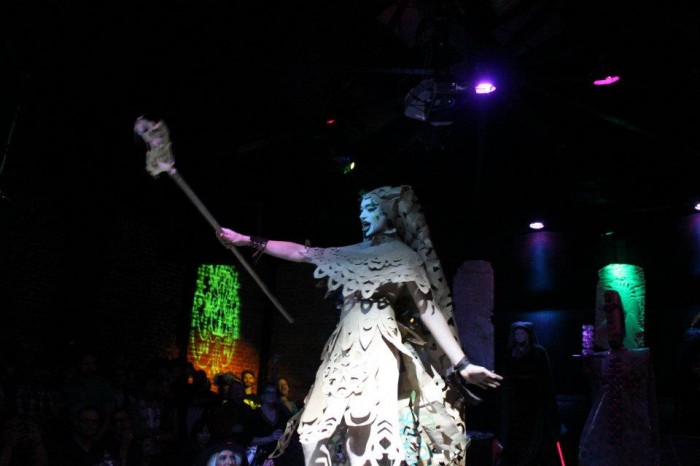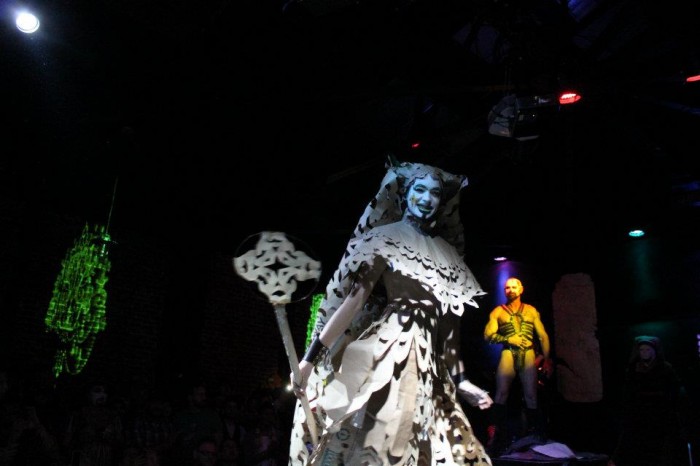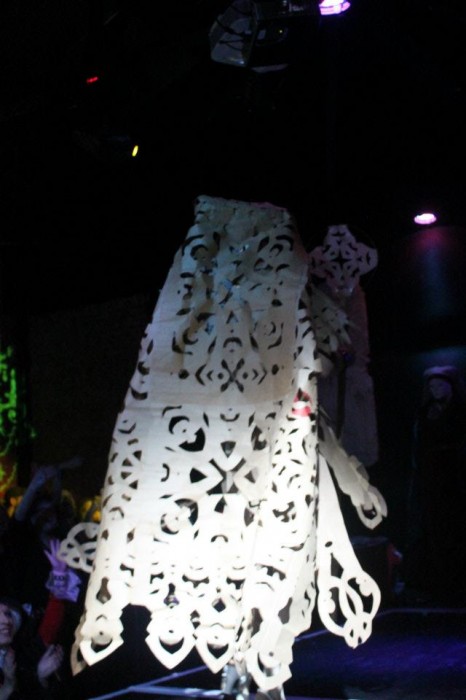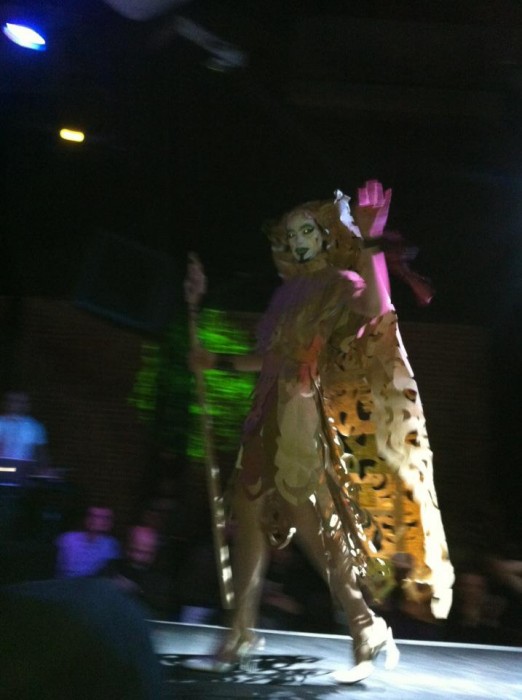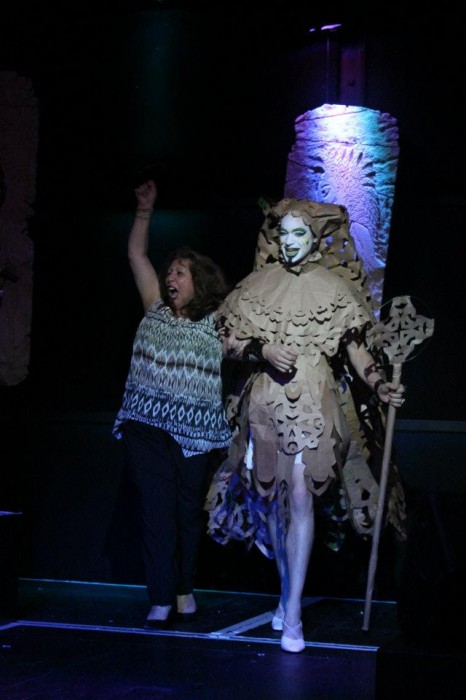When we look around the world today, we see that one of the main motivators of disharmony among people is religious ideology. Religions are meant to provide guidance for living. The dominant religions today are guiding people to hate, fear, and destroy. Many who seek more constructive guidance choose to reject religion. This path however still focuses on religion, just in opposition. It is the classic story of the hero facing a demon.
In the Hero’s Journey (a cycle that is found in many stories throughout the world, past and present, that Joseph Campbell details in “A Hero with A Thousand Facesâ€), at some point the hero encounters a demon. In order to progress the hero needs to get rid of the demon, otherwise the demon will continue to make trouble for the hero. Everything in the hero’s external world is a manifestation of the hero’s internal world. The demon is something significant to the hero that the hero is experiencing it in a negative way. The key is not to obliterate the demon, but to turn it into something that works with the hero instead of against the hero. In other words turning the demon into a god.
It is helpful to look at the things we see or experience every day from a different perspective to gain insight. Putting things in symbolic terms can help us focus on the important aspects and filter out the distractions. One view that we can take is to look at our lives as a story and see where we are in the cycle of the Hero’s Journey.
We are each the hero of our life and on a hero’s journey. The beginning of the hero’s journey is the call to adventure. Did you hear the call? Did you answer or refuse the call? What is going on right now in your hero’s journey?
At one Religion Kitchen session we shared a story about our hero and one of the hero’s demons. Here is my story. It’s about the “Never-ending To-do list.†The Dreamer Marilyn is flying in the sky dreaming up things to do, which creates the To-do list. The On-the-ground Marilyn, to whom the Dreamer Marilyn is tied, is busily checking off things on the To-do list. No matter how fast Marilyn works, she can never get through the list. The To-do list demon that plagues Marilyn is actually created by Marilyn.
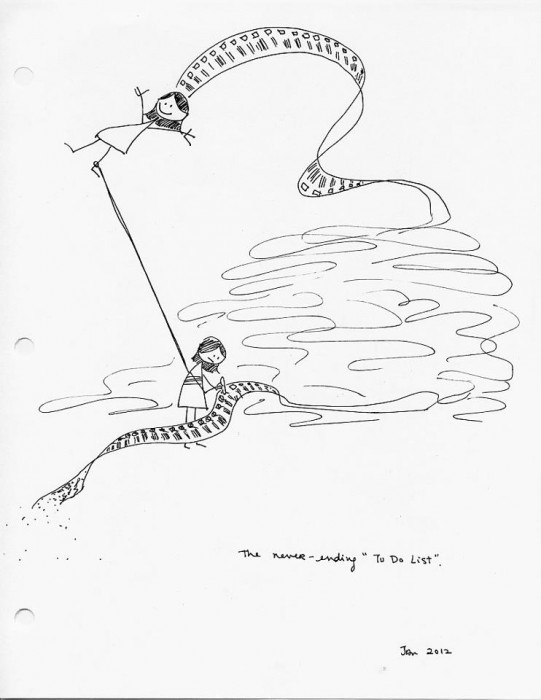
What is one of your demons?
Below are some excerpts of material for further reading.

From An Open Life: Joseph Campbell in Conversation with Michael Toms, Harper and Row Publishers, New York:1989, p.33
“The Waste Land [of the grail quest] is a world where people live not out of their own initiative, but out of what they think they’re supposed to do. People have inherited their official roles and positions; they haven’t earned them. This is the situation of the Waste Land: everybody leading a false life…. Now, the hero of the Grail is one who acts out of his own spontaneous nature…. The meaning of the Grail and of most myths is finding the dynamic source in your life so that its trajectory is out of your own center and not something put on you by society…. There are two aspects of the hero, I think. The hero is someone whom you can lean on and who’s going to rescue you; he is also an ideal. To live the heroic life is to live the individual adventure. One of the problems today is that with the enormous transformations in the forms of our lives, the models for life don’t exist for us…. The hero-as-model is one thing we lack, so each one has to be his own hero and follow the path that is no path.â€
From “An Open Life: Joseph Campbell in Conversation with Michael Toms,” Harper and Row Publishers, New York:1989, pp.28-29
“My definition of a devil is a god who has not been recognized. That is to say, it is a power in you which you have not given expression, and you push it back. An then, like all repressed energy, it builds up and becomes completely dangerous to the position that you’re trying to hold.â€
From “A Joseph Campbell Companion,” Harper Collins, 1991, p. 156
“What is the obstruction in your life, and how do you transform it into radiance?… In India, demons are really obstructions to the expansion of consciousness. A demon or devil is a power in you which you have not given expression, an unrecognized or suppressed god. Anyone who is unable to understand a god sees it as a devil.â€
From “A Joseph Campbell Companion,” Harper Collins, 1991, p. 77-82
The hero’s journey always begins with the call. One way or another, a guide must come to say, “Look, you’re in sleepy land. Wake. Come on a trip. There is a whole aspect of your consciousness, your being, that’s not been touched. So you’re at home here? Well, there’s not enough of you there.†And so it starts.
The herald or announcer of the adventure … is often dark, loathly, or terrifying, judged evil by the world; yet if one could follow, the way would be opened through the walls of day into the dark where the jewels glow.
The call is to leave a certain social situation, move into your own loneliness and find the jewel, the center that’s impossible to find when you’re socially engaged. You are thrown off-center, and when you feel off-centered it’s time to go. This is the departure when the hero feels something has been lost and goes to find it. You are to cross the threshold into new life. It’s a dangerous adventure, because you are moving out of the sphere of the knowledge of you and your community.
The first step, detachment or withdrawal, consists in a radical transfer of emphasis from the external to the internal world, macro to microcosm, a retreat from the desperations of the waste land to the peace of the everlasting realm that is within. But this realm, as we know from psychoanalysis, is precisely the infantile unconscious. It is the realm that we enter in sleep. We carry it within ourselves forever. All the ogres and secret helpers of our nursery are there all the magic of childhood. And more important, all the life-potentialities that we never managed to bring to adult realization, those other portions of ourselves, are there; for such golden seeds do not die.
When one thinks of some reason for not going or has fear and remains in society because it’s safe, the results are radically different from what happens when one follows the call. If you refuse to go, then you are someone else’s servant. When this refusal of the call happens, there is a kind of drying up, a sense of life lost. Everything is you knows that a required adventure has been refused. Anxieties build up. What you have refused to experience in a positive way, you will experience in a negative way.
If what you are following, however, is your own true adventure, if it is something appropriate to your deep spiritual need or readiness, then magical guides will appear to help you. If you say, “Everyone’s going on this trip this year, and I’m going too,†then no guides will appear. Your adventure has to be coming right out of your own interior. If you are ready for it, then doors will open where there were no doors before, and where there would not be doors for anyone else. And you must have courage. It’s the call to adventure, which means there is no security, no rules.
When you cross the threshold, you are passing into the dark forest, taking a plunge into the sea, embarking upon the night sea journey. It involves passing through clashing rocks, narrow gates, or the like, which represent yes and no, the pairs of opposites. There will be a moment when the walls of the world seem to open for a second, and you get an insight through. Jump then! Go! The gates will often close so fast that they take off the tail of your house. You may be dismembered, lose everything you have. This is Christ leaving the Mother, the world, and going to the Father, the Spirit. This is Jonah swallowed by the whale, its jaws being the pairs of opposites.
What this represents psychologically is the trip from the realm of conscious, rational intentions into the zone of those energies of the body that are moving from another center: the center with which you are trying to get in touch.
As you now go towards the center, there will come more aids, as well as increasingly difficult trials. You have to give up more and more of what you’re hanging on to. The final thing is a total giving up, a yielding all the way. This is a place directly opposite to your life experiences and all that you’ve been taught in school. Psychologically, it’s a shift into the unconscious; otherwise, it’s a move into a field of action of which you know nothing. Anything can happen, and it may be favorable or unfavorable.
The deeper you go, the closer you get to the final realization, the heavier the resistance. You are coming down to those areas that are the ones that are repressed, and it’s that repression system that you have to pass through. And there, of course, is where magical aid is most required. The hero may here discover for the first time that there is everywhere a benign power supporting him in his superhuman passage.
You come then to the final experience of discovering and making your own that which was lacking in the place from which you departed. This experience can be rendered in four different ways.
One rendition is the Sacred marriage, the meeting with the beloved which brings the birth of your own spiritual life, with the bride being whatever the life is that your relating to: male/female, I/Thou, this/that.
Another rendition is Atonement with the Father. The son has been separated from the father, meaning he has been living a life that’s inappropriate to his real heritage. The son is the temporal aspect, and the father is the eternal aspect from the same being. The father represents the natural order from which you have been removed. You are trying to find your character, which you inherit from your father. Atonement is bringing your own personal and contemporary program into accord with the life momentum out of which you have come.
Then there us Apotheosis, the realization that “I am that which all these other beings are.†The hero knows that he is It, the Buddha image, the knower of the truth. “The Kingdom of the Father is spread upon the earth and men do not see it.†That’s the illumination that comes with Apotheosis. You are not allowed that realization in Christianity, except in Gnostic Christianity. You can’t say, “The Christhood is in me.â€
Finally there’s the Elixir Theft, an entirely different sort of realization. Instead of a slow progress through the mysteries with the good will of the powers, there is a violent pressure through and a seizing — the fire theft by Prometheus or the use of LSD in the 60s — and you flee from the powers that you did not appease on the way. This is the transformation flight, where the hero, with the powers after him, carries his good back to the light world as fast as he can. Or one can have a schizophrenic crack up and stay down there….
You do not had a complete adventure unless you do get back. There is a time to go into the woods and a time to come back, and you know which it is. Do you have the courage?…
The final thing is knowing, loving, and serving life in a way in which you are eternally at rest. That point of rest has got to be in all of it. Even though you are active out there in the world, within you there’s a point of complete composure and rest. When that’s not there, then you are in agony.
